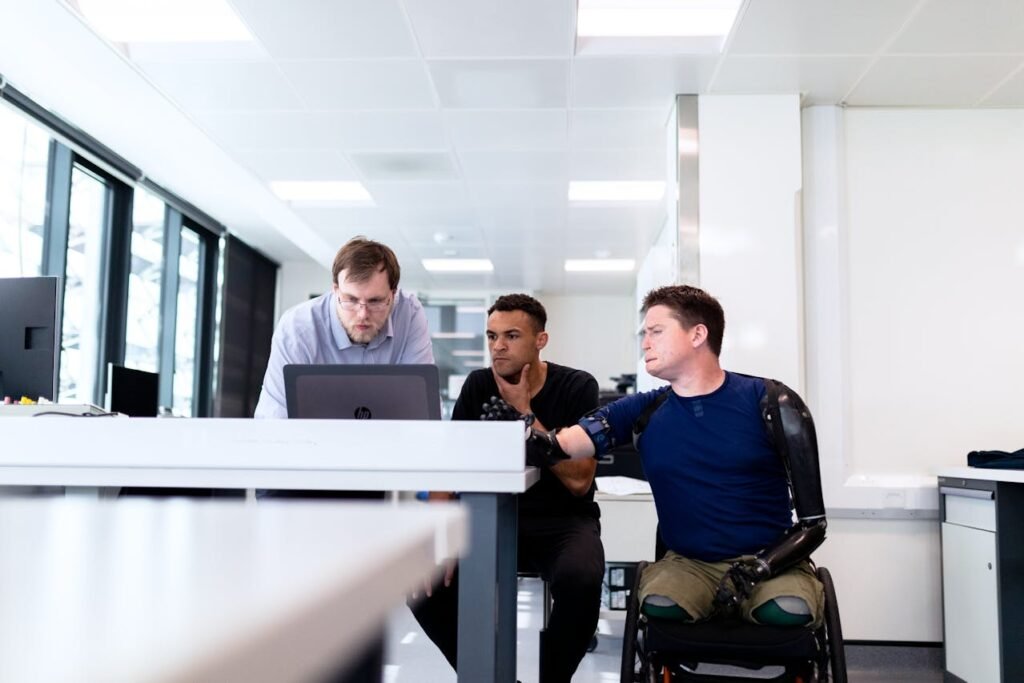Choosing a prosthetic limb is a life-changing decision, but it often comes with significant financial considerations. The cost of a prosthetic, combined with maintenance, upgrades, and associated care, can seem overwhelming. Insurance and funding play a critical role in making prosthetics more accessible, yet navigating these systems can be complex and time-consuming.
This guide is designed to simplify the process, helping you understand the ins and outs of insurance coverage and funding options. Whether you’re a first-time prosthetic user or upgrading to a new device, we’ll provide actionable insights to help you secure the financial support you need.
Understanding the Cost of Prosthetics
The cost of a prosthetic limb varies widely depending on the type, features, and materials used. A basic prosthetic limb designed for minimal activity may be relatively affordable, while advanced devices like myoelectric prosthetics with high-tech features can cost significantly more. Beyond the initial purchase, users must also factor in costs for fitting, physical therapy, routine maintenance, and potential upgrades.
Breaking Down the Components
A prosthetic’s cost typically includes the device itself, the socket that connects it to your residual limb, and any advanced features such as microprocessors or custom designs. Each component contributes to the overall price, and understanding these elements can help you make informed decisions.
For example, a myoelectric arm with precise finger control might have a higher upfront cost but could eliminate the need for additional adaptive tools, saving money in the long term. Similarly, choosing high-quality materials like carbon fiber ensures durability and reduces the frequency of replacements.
For businesses, providing clear and detailed cost breakdowns during consultations builds trust and ensures users understand what they’re paying for. Offering side-by-side comparisons of different models helps users weigh the benefits of more advanced options against their budgets.
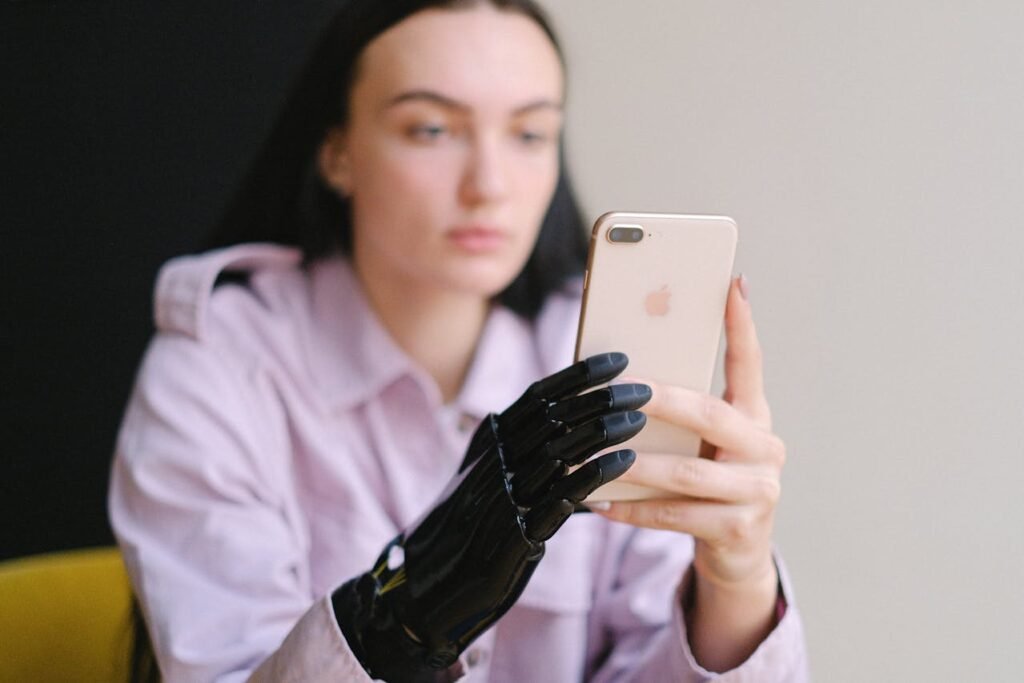
Long-Term Value Versus Upfront Costs
While it’s natural to focus on upfront costs, it’s essential to consider the long-term value of a prosthetic. A lower-cost option may suffice in the short term, but if it lacks durability or functionality, users might end up spending more on replacements or upgrades.
Conversely, investing in a high-quality device from the outset can lead to better performance, fewer repairs, and greater satisfaction.
Businesses can guide users through this decision by highlighting the cost-benefit balance of different prosthetic models. Offering financing plans or upgrade paths ensures users don’t feel pressured to choose between affordability and functionality.
Navigating Insurance for Prosthetics
Insurance is one of the most common ways users offset the cost of a prosthetic limb. However, understanding what’s covered and how to access those benefits can be challenging. Different policies, coverage limits, and approval processes mean there’s no one-size-fits-all solution.
Knowing Your Coverage
The first step in navigating insurance is understanding your policy. Coverage for prosthetics varies widely depending on the insurer, the type of plan, and the country or region. Some plans cover only basic devices, while others include advanced options, maintenance, and physical therapy.
For users in India, where insurance coverage for prosthetics is still evolving, it’s crucial to ask your provider specific questions. For instance, inquire about coverage limits, exclusions, and whether pre-authorization is required. If you’re unsure, reaching out to an insurance expert or your prosthetics provider can clarify the details.
For businesses, offering insurance assistance as part of your services can add immense value. Helping users verify their coverage or connecting them with insurance liaisons simplifies the process and strengthens trust.
Navigating Approval Processes
Insurance approvals for prosthetics often require documentation from multiple parties, including doctors, prosthetists, and insurers. A letter of medical necessity (LMN) from your doctor is typically the first step. This document outlines why the prosthetic is essential for your health, mobility, or quality of life.
Users should also be prepared to provide detailed information about their daily activities and goals, as insurers may evaluate whether the recommended prosthetic aligns with their needs. For example, an insurer might require justification for a high-tech device if a basic option could suffice.
Developing a Tailored Insurance Strategy
Every insurance policy is unique, and the coverage for prosthetics can vary widely. Some policies may cover only the basics, while others might provide substantial support for advanced prosthetics, including features like myoelectric controls or specialized attachments. The key is to develop a tailored strategy that aligns with the user’s needs and their specific policy terms.
Businesses can enhance this process by offering personalized consultations that evaluate the user’s insurance plan in detail. For example, a review of coverage limits, pre-authorization requirements, and out-of-pocket costs can provide users with a clear picture of their financial responsibilities.
Additionally, helping users compare different prosthetic options within their coverage ensures they make a well-informed choice that maximizes their benefits.
Preempting Common Insurance Challenges
Insurance claims for prosthetics often require extensive documentation, including medical records, prescriptions, and cost estimates. Missing or incomplete paperwork can lead to delays or denials, adding unnecessary stress to the user’s experience.
Businesses can address this by creating a comprehensive checklist for users, detailing all the required documents and steps for submitting a claim.
For instance, ensuring that the letter of medical necessity (LMN) is thorough and specific can prevent insurers from questioning the prosthetic’s necessity. Providing sample LMNs or working directly with physicians to draft them ensures they meet the insurer’s criteria.
Advocating for Comprehensive Coverage
For some users, their insurance policy may fall short of covering the prosthetic they need. This is where advocacy becomes crucial. Businesses can assist users by preparing appeal letters, submitting supplementary evidence, or directly communicating with insurance representatives to argue for expanded coverage.
Highlighting how the recommended prosthetic improves the user’s quality of life, ability to work, or overall health outcomes strengthens the case for approval.
For example, demonstrating that an advanced prosthetic reduces the likelihood of falls, long-term medical costs, or dependency on caregivers makes a compelling argument for insurers.
Overcoming Insurance Challenges
While insurance can significantly reduce the cost of a prosthetic limb, the process is not always straightforward. Users often encounter challenges such as denied claims, limited coverage, or prolonged approval times. Understanding how to navigate these obstacles can make the journey less stressful and more successful.
Handling Denied Claims
A denied insurance claim can be frustrating, but it doesn’t have to be the end of the road. Insurers may deny claims for several reasons, such as insufficient documentation, lack of pre-authorization, or disputes over the necessity of a particular prosthetic model.
To address a denied claim, users should first review the insurer’s explanation of benefits (EOB) to understand the reason for denial. Sometimes, providing additional evidence, such as detailed medical records or a revised letter of medical necessity, can reverse the decision.
For businesses, offering advocacy services to help users appeal denied claims is a powerful way to support them. This might include coordinating with medical professionals to provide supplemental documentation or connecting users with legal experts who specialize in insurance disputes.
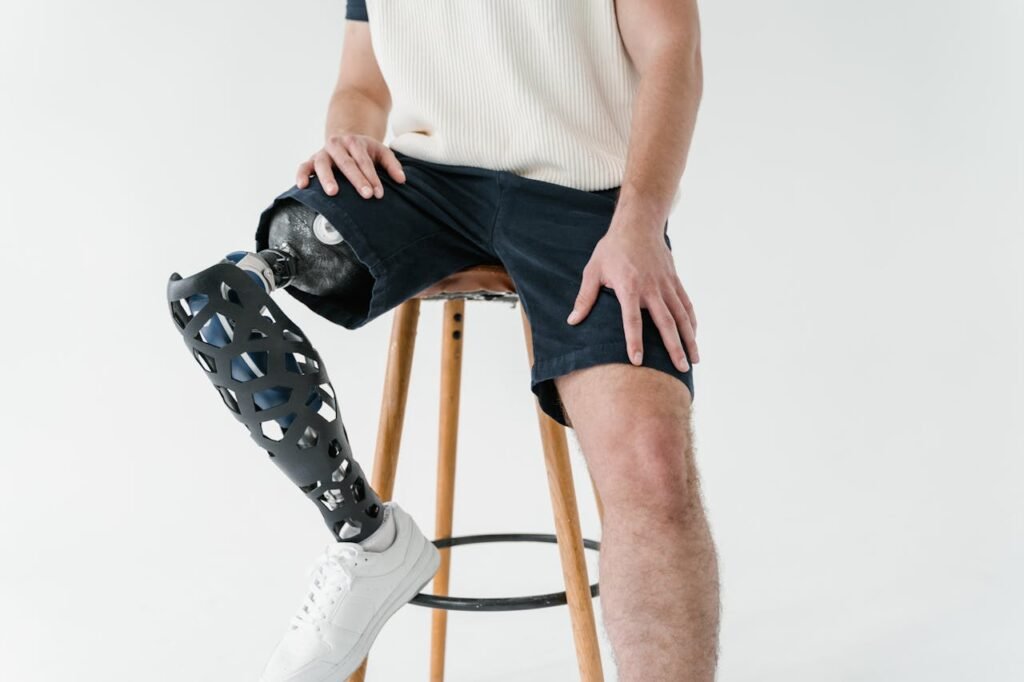
Navigating Coverage Limits
Many insurance policies impose coverage limits, either in terms of cost or the type of prosthetic allowed. For instance, a policy might cover only a standard prosthetic limb, leaving users to pay out-of-pocket for advanced features.
Businesses can address these limitations by offering cost-effective solutions that align with users’ budgets. For example, recommending modular prosthetics that allow for incremental upgrades can help users start with a basic device and add advanced components as their finances permit.
Educating users about supplementary insurance options or employer-sponsored health plans can also expand their coverage.
Proactively Reducing Delays
Delays in insurance approvals can disrupt the timeline for receiving a prosthetic limb, especially when users need it urgently to regain mobility. Businesses can help users avoid delays by ensuring all necessary paperwork is submitted correctly and promptly.
For example, establishing a checklist of required documents—such as prescriptions, activity evaluations, and cost estimates—ensures nothing is overlooked. Using digital tools to track the progress of insurance submissions and sending timely reminders for follow-ups can keep the process on track.
Exploring Funding Options Beyond Insurance
While insurance is a key resource, it’s not the only option for funding a prosthetic limb. For users without comprehensive coverage or those facing significant out-of-pocket costs, exploring alternative funding sources can make the difference between accessibility and limitation.
Government Assistance Programs
In many regions, government programs offer financial assistance for prosthetic devices, particularly for individuals with disabilities or low income. In India, for example, schemes like the Rights of Persons with Disabilities (RPWD) Act aim to improve access to assistive devices through subsidies and grants.
For businesses, staying informed about government initiatives allows you to guide users toward these resources. Offering assistance with applications or partnering with government agencies to streamline the process enhances your reputation as a user-focused provider.
Nonprofit Organizations and Charities
Numerous nonprofit organizations and charities provide financial aid for prosthetic limbs, especially for children, veterans, and underserved populations. These organizations often fundraise specifically to cover the costs of advanced prosthetics that insurance might not fully support.
Businesses can collaborate with nonprofits to create referral programs or joint initiatives, ensuring users have access to these valuable resources. Highlighting success stories from past beneficiaries can inspire confidence and encourage others to explore these options.
Crowdfunding as a Community Effort
Crowdfunding has become an increasingly popular way to raise funds for medical expenses, including prosthetics. Platforms like Ketto, GoFundMe, and Milaap allow users to share their stories and connect with potential donors.
For businesses, offering guidance on crafting compelling crowdfunding campaigns can help users succeed in raising the necessary funds.
This might include tips on storytelling, sharing on social media, and outlining the specific impact of their prosthetic. Partnering with users to amplify their campaigns through your networks adds a personal touch and demonstrates genuine care.
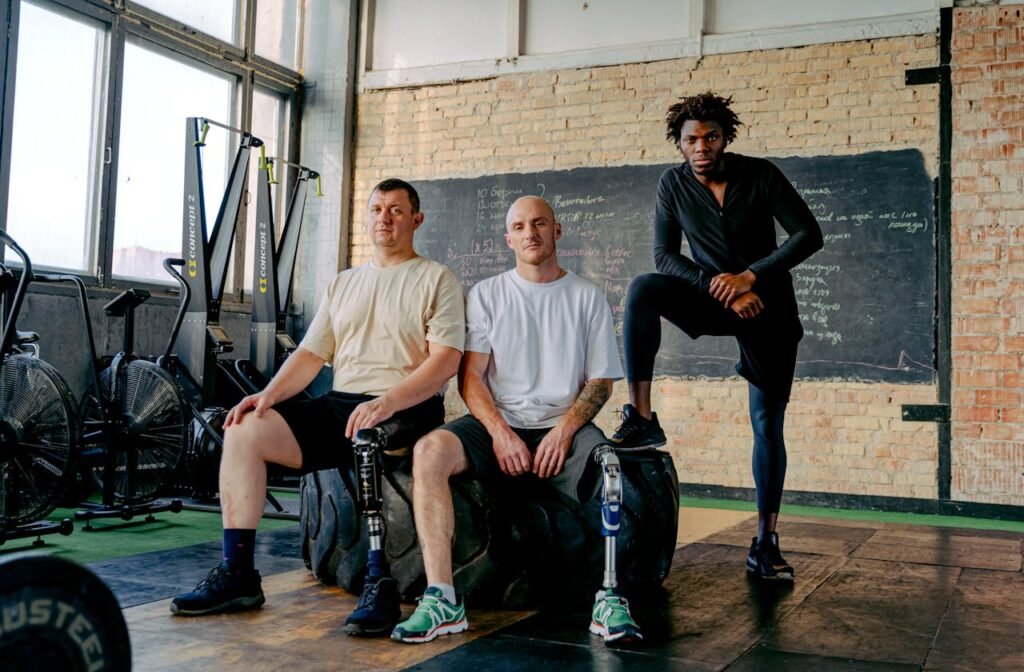
Financial Planning for Long-Term Prosthetic Costs
The journey with a prosthetic limb doesn’t end with the initial purchase. Users must plan for long-term expenses, including maintenance, upgrades, and replacements, which can add up over time. Financial planning ensures that users can continue to enjoy the benefits of their prosthetic without financial strain.
Budgeting for Maintenance
Prosthetic limbs require regular maintenance to remain functional and comfortable. This includes cleaning, replacing worn-out components, and addressing any technical issues that arise. While some maintenance may be covered by insurance, other costs, such as repairs or upgrades, may not be.
For businesses, offering maintenance packages or annual service plans provides users with predictable costs and peace of mind. Bundling these plans with the initial purchase ensures users have immediate access to support while helping them budget effectively for ongoing care.
Planning for Future Upgrades
As technology evolves, users may wish to upgrade their prosthetic to take advantage of new features or improved designs. For example, someone initially using a basic device might later transition to a myoelectric prosthetic for enhanced functionality.
Businesses can support this transition by offering trade-in programs or flexible payment options for upgrades. Educating users about the typical lifespan of their prosthetic and the benefits of newer models helps them plan ahead.
Highlighting innovative features, such as increased battery life or advanced sensory feedback, keeps users informed and excited about future possibilities.
Saving for Replacements
Even the most durable prosthetic limbs have a finite lifespan. Factors such as daily use, changing physical needs, and technological advancements mean that users will likely need a replacement at some point. Planning for this eventuality is crucial to avoid unexpected financial burdens.
For businesses, providing users with an estimated timeline for replacement helps them prepare financially. Encouraging users to set aside funds or explore savings plans ensures they’re ready when the time comes. Businesses that establish loyalty programs or offer discounts for repeat customers further ease the financial transition to a new device.
Building Relationships with Funding Partners
Navigating insurance and funding systems is often a collaborative effort. Businesses that build strong relationships with funding partners—such as insurers, nonprofits, and government agencies—can offer users a more seamless experience.
Partnering with Insurance Providers
Establishing direct relationships with insurance providers allows businesses to stay informed about policy changes, coverage limits, and approval processes. By maintaining open communication, businesses can advocate more effectively on behalf of users and expedite claims.
Providing insurers with clear documentation about the medical necessity of advanced prosthetics, along with detailed cost estimates, strengthens the case for coverage.
Businesses that act as liaisons between users and insurers enhance their credibility and position themselves as trusted advocates.

Collaborating with Nonprofit Organizations
Nonprofits often serve as a vital bridge for users who need additional financial support. Businesses that partner with these organizations can refer users to relevant programs or work together to fundraise for specific cases.
For example, co-hosting events with nonprofits, such as awareness campaigns or fundraising drives, raises visibility for both organizations while directly benefiting users. Businesses that actively engage with charitable initiatives demonstrate a commitment to making prosthetics accessible for all.
Supporting Employers and Workplace Programs
Employers can play a significant role in funding prosthetics for their employees, particularly through workplace health plans or disability support programs. Businesses that educate employers about the benefits of advanced prosthetics and their impact on employee productivity can open new avenues for funding.
Offering workshops or resources tailored to HR professionals and employers ensures they understand the value of supporting their employees’ prosthetic needs.
Highlighting the return on investment—such as improved mobility, reduced sick days, and enhanced job satisfaction—makes a compelling case for workplace funding.
Empowering Users Through Education
Navigating the financial aspects of prosthetics can feel daunting, but knowledge is a powerful tool. Businesses that prioritize user education not only build trust but also empower individuals to make informed decisions.
Creating Transparent Resources
Providing clear, straightforward resources about insurance, funding, and costs helps users feel confident in their journey. This could include guides on how to read insurance policies, step-by-step instructions for filing claims, or FAQs about common funding options.
For businesses, offering these resources online or as part of in-person consultations ensures they’re easily accessible. Interactive tools, such as cost calculators or coverage checkers, further simplify the process for users.
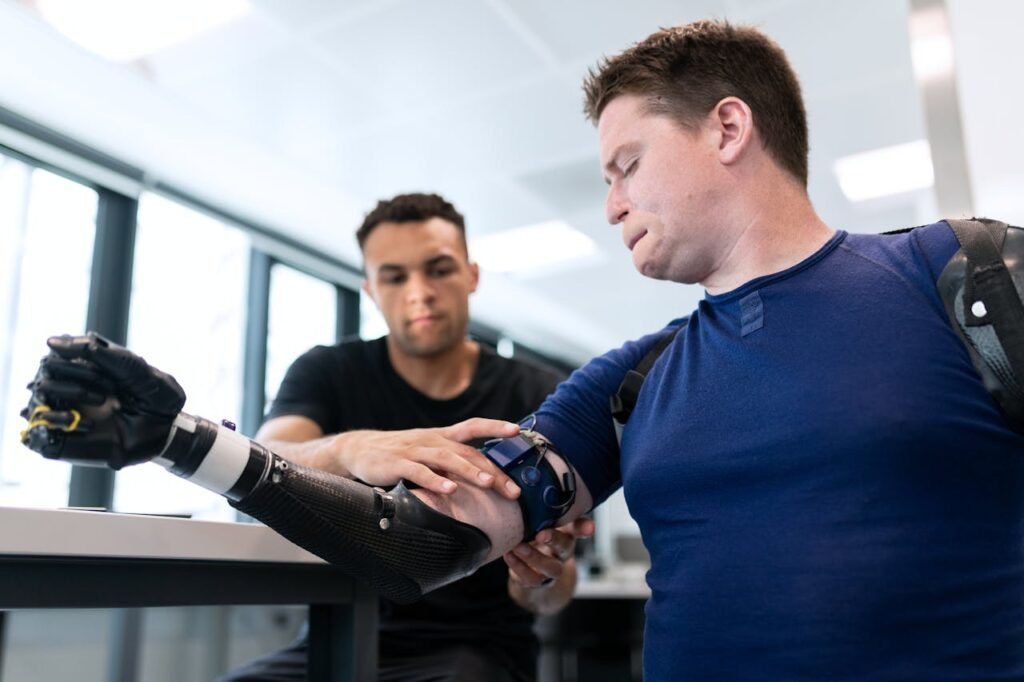
Hosting Educational Workshops
Workshops and webinars provide an opportunity to educate users and their families about funding strategies. Topics might include understanding government programs, maximizing insurance benefits, or exploring alternative funding sources.
For businesses, these events are not only a chance to share knowledge but also to build relationships with potential users. By positioning themselves as thought leaders in prosthetic funding, businesses strengthen their reputation and attract a loyal customer base.
Simplifying Complex Information
The language of insurance policies, funding applications, and medical documentation can often be confusing or intimidating for users. Simplifying this information without losing its accuracy is essential to empowering users.
For instance, breaking down the steps of filing an insurance claim into straightforward, actionable instructions ensures that users feel confident in their ability to navigate the process.
For businesses, offering user-friendly materials, such as visual guides, infographics, or short videos, makes the learning process more accessible. Creating dedicated resources tailored to specific regions or types of funding programs ensures relevance and usability.
For example, an educational module focused on navigating government assistance schemes in India can address the unique challenges and opportunities users may encounter locally.
Encouraging Self-Advocacy
Teaching users how to advocate for their needs is a critical component of education. Many users are unaware of their rights, the full extent of their insurance benefits, or how to appeal a denied claim effectively.
Businesses can empower users by providing templates for letters of medical necessity, examples of successful appeals, or tips on how to communicate with insurers.
Role-playing scenarios during consultations or workshops can also build confidence. For instance, simulating a conversation with an insurance representative helps users practice articulating their needs and asking the right questions.
Businesses that take the time to teach these skills not only empower their users but also reduce the likelihood of disputes or delays.
Building Confidence Through Transparency
Transparency in the prosthetic selection and funding process reassures users that they are making informed decisions. This involves explaining why certain devices are recommended, how costs are broken down, and what specific benefits each funding source provides.
For users, understanding the rationale behind these recommendations builds trust and removes the fear of being overcharged or misled.
Businesses that adopt a transparent approach—providing clear cost estimates, outlining potential out-of-pocket expenses, and explaining the steps for accessing funding—position themselves as reliable partners.
Offering digital platforms where users can track the progress of their funding applications or review cost breakdowns in real-time adds an extra layer of confidence.

Conclusion
The cost of a prosthetic limb should never stand in the way of independence, mobility, and quality of life. By navigating insurance and funding systems strategically, users can access the devices they need while minimizing financial stress.
For businesses, the responsibility goes beyond manufacturing prosthetics. Acting as a guide through the funding process, building relationships with key partners, and offering user-centric solutions ensures that prosthetics are accessible to as many individuals as possible.
Ultimately, securing the right funding is about empowering users to focus on what truly matters: embracing life, achieving their goals, and moving forward with confidence. With the right support and resources, businesses and users together can overcome financial barriers and open doors to a more inclusive future.



